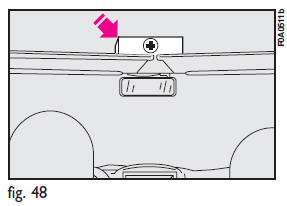– It is important to keep calm.
– If you are not directly involved in the accident, stop at least ten meters away from the accident.
– If you are on a motorway, do not obstruct the emergency lane with your vehicle.
– Turn off the engine and turn on the hazard lights.
– At night, illuminate the scene of the accident with your headlights.
– Act carefully, you must not risk being run over.
– Mark the accident by putting the red triangle at the regulatory distance from the vehicle where it can be clearly seen.
– Call for rescue making the information you give as accurate as you can. On the motorway use the special column-mounted emergency phones.
– In pile-ups on the motorway, particularly when the visibility is bad, there is a high risk of other vehicles running into those already stopped.
Get out of the vehicle immediately and take refuge behind the guard rail.
– If the doors are blocked, do not attempt to smash the windscreen to get out of the vehicle. It is made of layered glass and is very hard. Side and rear windows are much more easily broken.
– Remove the ignition keys from the vehicles involved.
– If you can smell petrol or other chemicals, do not smoke and make sure all cigarettes are extinguished.
– Use a fire extinguisher, blanket, sand or earth to put out fires no matter how small they are. Never use water.
IF ANYONE IS INJURED
– Never leave the injured person alone. The obligation to provide assistance exists even for those not directly involved in the accident.
– Do not congregate around the injured person.
– Reassure the injured person that help is on its way and will arrive soon.
Stay close by to calm him/her down in case of panic.
– Unfasten or cut seat belts holding injured parties.
– Do not give an injured person anything to drink.
– Do not move an injured person unless the following situations arise.
– Pull the injured person from the vehicle only if it risks catching fire, it is sinking in water or is likely to fall over a cliff or similar. Do not pull his/her arms or legs, do not bend the head and, as far as possible, keep the body horizontal.
FIRST-AID KIT
It is a good idea to keep a fire extinguisher and blanket in the vehicle in addition to the first-aid kit.
The first aid kit can be arranged on the shelf as shown in fig. 48.

See also:
Limited range
Messages will be shown on the display when range falls below 50 km. ...
Steering
...
Code card (where required)
The car is delivered with two copies of the key and the CODE card which bears
the following:
❒ the electronic code (A) to be used for emergency starting (see “Emergency starting”
in sectio ...


